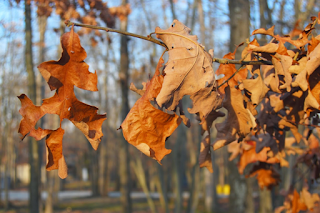Tuesday, December 21, 2021 @ 3:59 PM EST
Late dawn. Early sunset. Short day. Long night. The shortest day and the longest night of the year. It marks a turn in the seasons as the length of the days get longer.
The Washington Post’s Weather Gang reports that “even though daylight slowly increases after the solstice, many places don’t see their coldest days until mid-January. This happens because the Northern Hemisphere continues to lose more heat than it gains for several more weeks. The oceans – which take longer than land to heat up and cool down – play a role in this seasonal temperature lag. Only after the Northern Hemisphere starts to receive more solar energy than it loses do average temperatures begin their upward ascent.”Doug Wenztel of the Shaver’s Creek Environmental Center says there’s a bright side as well. This is an opportunity to go out and explore your local areas and see a different landscape.
A walk along a favorite summertime wooded path reveals the shapes of trees and their branching patterns. Sit still and quiet for 15 minutes and soon you will see the birds that stay with us all winter. Discover mosses and evergreen ground covers nestled against the rocks near the path or check the edges of a pond for ice crystals.
You most likely will hear the rustle and rattle of dead leaves still clinging to the branches of some trees. Kathleen V. Salibury, Extension Educator, asks, "Have you ever noticed some trees hang on to their leaves after all the other have colored up and fallen to the ground?" in her article "Why Do You Just Keep Me Hanging On?"
“…there's a reason why some leaves keep on hanging on all winter. Marcescence (use it 3 times in a sentence today and you own this word!) is the term for this winter retention of leaves. Beech and oak are deciduous native trees, losing their leaves each fall. But young beech, as well as their cousins [the] oaks, not to mention musclewood, witchhazels and parrotia, hang on to some of their leaves throughout the winter. They are marcescent.
In the fall trees create a separation zone (abscission layer) between petiole (leaf stem) and branch. If the separation layer is complete, the leaves will drop to the ground, to add nutrients to the root zone as they decompose.
Trees shed their leaves to
prepare for harsh winter conditions by conserving valuable resources. They
create this separation zone so the falling leaves do not damage the plant in
the process of shedding. Marcescent trees do not form this abscission layer
completely and so some of the leaves hang on through the winter.”
~ Carol Kagan, Master Gardener








No comments:
Post a Comment